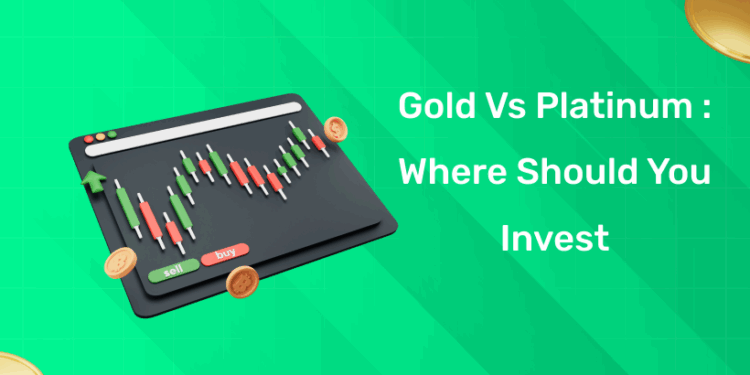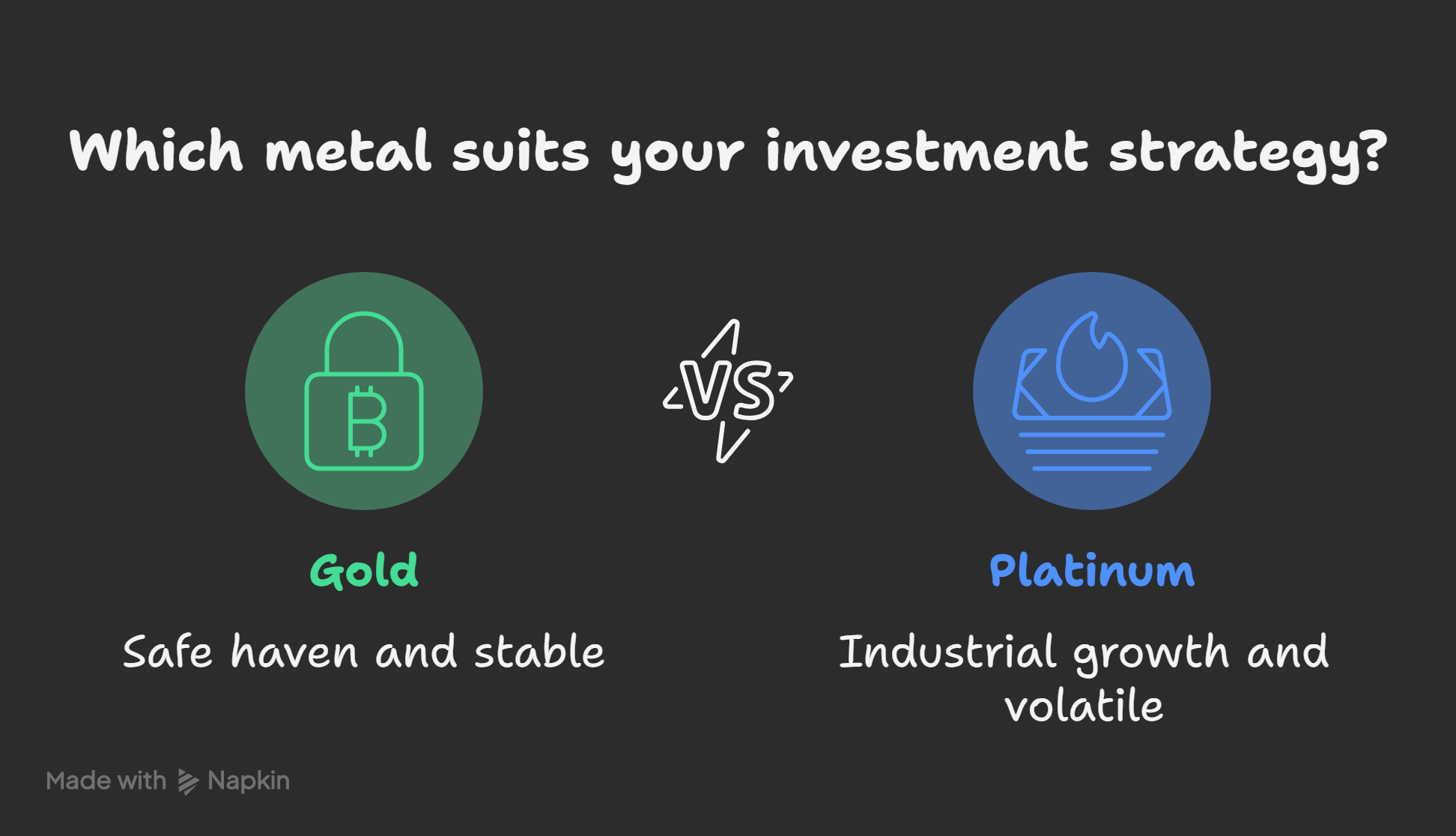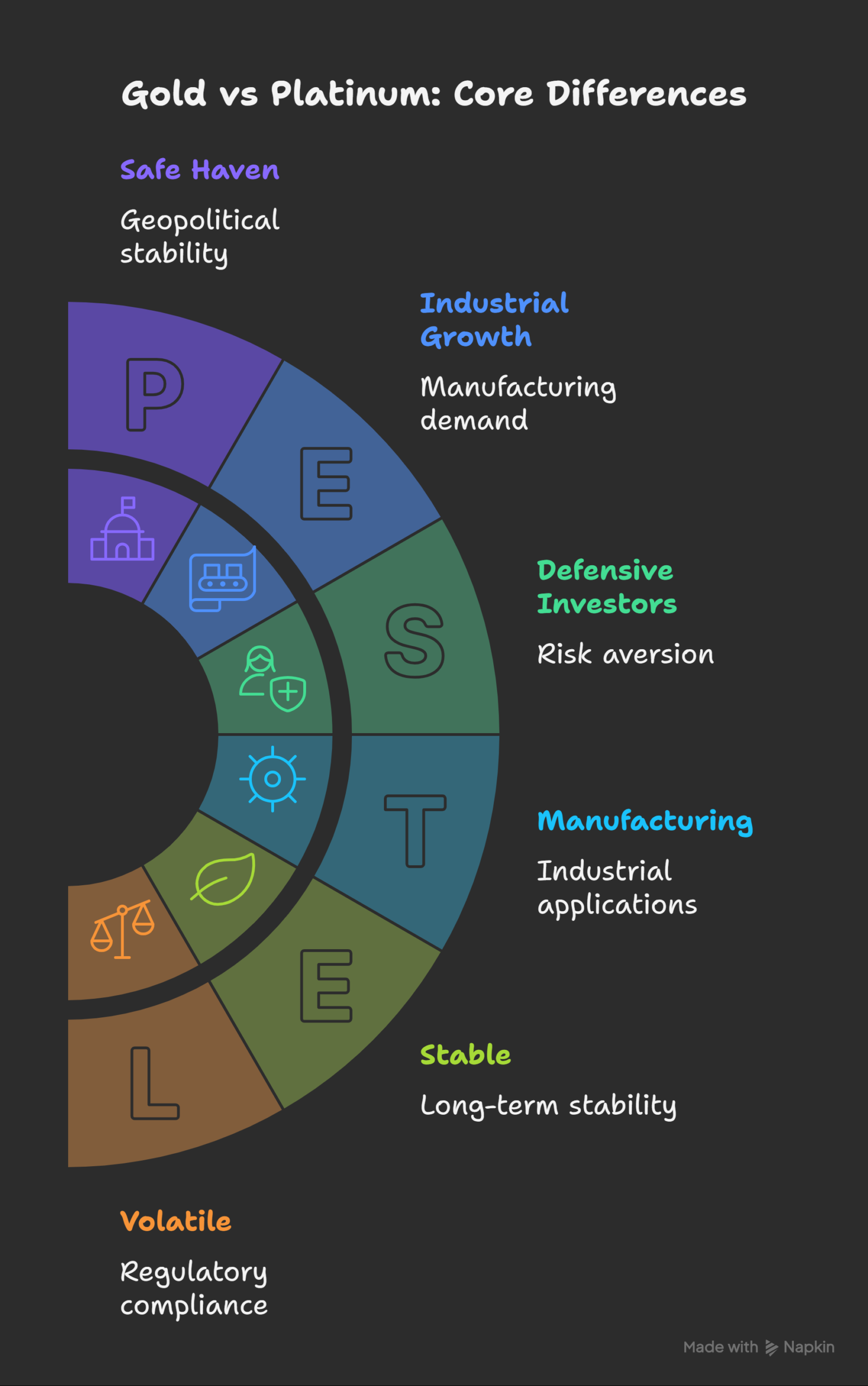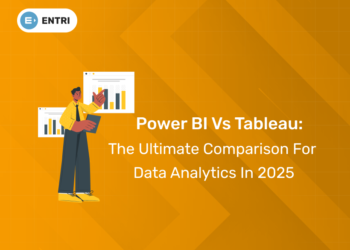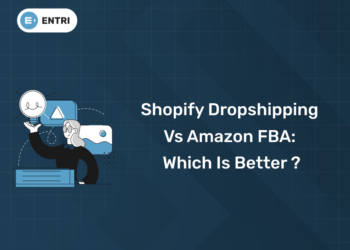Table of Contents
Gold vs Platinum often confuses new investors. Many people wonder which metal performs better. Both metals look similar yet behave differently. This blog helps you understand those differences clearly. You will learn which suits your investment style. Each point is explained in simple language. Keep reading to choose wisely with confidence. This guide makes the decision much easier.
Gold protects wealth during uncertain global events. Platinum thrives when industries grow strongly. Your goals decide the right choice. Safety seekers usually prefer gold first. Opportunity seekers consider platinum exposure. The key is a balanced understanding always. This blog walks you through everything stepwise.
Quick Highlights
-
Learn how both metals create value.
-
Understand market behaviour and risk levels.
-
Discover which performs better long-term.
-
Find out who should pick which metal.
-
Helps beginners and experienced investors alike.
Learn Stock Marketing with a Share Trading Expert! Explore Here!
Introduction
Investors always look for safe wealth assets. Precious metals often play that strong role. Among them, gold and platinum stand out. Each metal carries a unique investment purpose. Gold acts as a traditional safe haven. Platinum behaves like a high-growth industrial metal. Both can strengthen a smart investment portfolio. The difference lies mainly in risk levels.
Gold attracts cautious and long-term investors. It shines during crisis or inflation spikes. Platinum attracts bold and opportunity-driven buyers. Its price moves with global industrial demand. Understanding these differences prevents confusion later. This comparison helps you invest wisely ahead.
Why This Comparison Matters
-
Investors face rising global uncertainty.
-
Metal choices affect portfolio safety.
-
Gold protects better during market stress.
-
Platinum rewards grow faster.
-
Wrong selection increases avoidable risk.
-
Right understanding ensures balanced planning.
-
Knowledge gives confidence before investing.
Understanding the Two Metals
1: What is a stock?
Gold and platinum look similar but act differently. Their purpose, price movement, and usage also differ. Knowing these basics helps smarter investment choices. Gold serves mainly as a wealth protector. Platinum behaves more like a growth commodity. Both have value, but through different drivers.
1. What is Gold?
Gold is a monetary metal. It holds value across generations reliably. Central banks actively store gold reserves. People buy gold for financial security. It carries emotional and cultural value too. Demand mostly comes from investors and jewelry.
Key Features of Gold
| Aspect | Meaning |
|---|---|
| Role | Wealth preservation |
| Nature | Stable and defensive |
| Demand Base | Global and consistent |
| Price Movement | Slow but steady |
| Risk Level | Comparatively lower |
2. What is Platinum?
Platinum is an industrial precious metal. Its price depends mainly on manufacturing demand. Automobile industries use platinum heavily. Technology and green energy also need platinum. Mining supply is limited and concentrated. Industrial shifts affect platinum prices quickly.
Key Features of Platinum
| Aspect | Meaning |
|---|---|
| Role | Industry driven |
| Nature | Cyclical and dynamic |
| Demand Base | Automotive and technology |
| Price Movement | Faster and sharper |
| Risk Level | Comparatively higher |
3. Core Difference Between Their Behaviour
| Factor | Gold | Platinum |
|---|---|---|
| Main Purpose | Safe haven | Industrial growth |
| Usage Area | Finance | Manufacturing |
| Price Drivers | Fear and uncertainty | Industry demand |
| Investor Type | Defensive | Aggressive |
| Long-Term Nature | Stable | Volatile |
In Short
-
Gold reacts to global fear.
-
Platinum reacts to economic growth.
-
Gold is steady during recessions.
-
Platinum rises during expansion.
-
Gold suits safe wealth holding.
-
Platinum suits risk-based growth.
Invest Smart, Learn Faster – Mutual Fund Course for Kerala
Price Trends and Historical Performance
Gold and platinum have followed different journeys. Their price movements reflect their core roles. Gold shows higher stability over long periods. Platinum shows bigger swings and sharper rallies. History clearly separates safe haven from industry metal.
1. Gold Price Behaviour Over Time
Gold rises during global uncertainty periods. It protects purchasing power during inflation phases. Central banks also support gold demand globally. Gold rarely collapses without recovery later. Its overall trend stays upward long term.
Key Highlights of Gold Performance
| Aspect | Observation |
|---|---|
| Stability | Consistently stable |
| Crashes | Less frequent |
| Recovery | Usually quick |
| Long-Term Trend | Upward bias |
| Risk Level | Lower |
2. Platinum Price Behaviour Over Time
Platinum shows strong growth during expansion cycles. It reacts quickly to supply disruptions globally. Industrial demand pushes its price higher rapidly. However, price drops can also happen fast. Its chart shows wider price fluctuations historically.
Key Highlights of Platinum Performance
| Aspect | Observation |
|---|---|
| Stability | Less stable |
| Crashes | More sudden |
| Recovery | Depends on industry |
| Long-Term Trend | Cyclical trend |
| Risk Level | Higher |
3. Long-Term Comparison
| Factor | Gold | Platinum |
|---|---|---|
| Price Trend | Gradual rise | Cyclical rise |
| Shock Resistance | High | Moderate |
| Demand Consistency | Strong | Variable |
| Recovery Pattern | Predictable | Situational |
| Investor View | Safe asset | Growth asset |
In Short
-
Gold grows slow but steady.
-
Platinum rises fast during booms.
-
Gold protects during global stress.
-
Platinum benefits during growth cycles.
-
Both react to different market triggers.
Demand Drivers
Gold and platinum gain value from different sources. Their demand patterns come from separate industries. Understanding these drivers helps forecast performance. Gold thrives on sentiment and security demand. Platinum thrives on industrial and technology needs.
1. Gold Demand Sources
Gold demand mostly comes from wealth protection. Its buyers focus more on safety needs. It benefits during financial or geopolitical stress. Demand also rises in festive seasons. Large institutions also support long-term demand.
Key Drivers of Gold Demand
| Driver | Explanation |
|---|---|
| Central Banks | Increase reserves for stability |
| Investors | Prefer safe haven exposure |
| Jewelry Markets | High cultural demand |
| Inflation Hedge | Protects purchasing power |
| Global Uncertainty | Increases safe asset buying |
2. Platinum Demand Sources
Platinum demand mainly comes from heavy industries. Most consumption occurs in automotive production. Green technologies also require platinum inputs. Electronics and chemical plants boost additional demand. Economic expansion strengthens platinum outlook.
Key Drivers of Platinum Demand
| Driver | Explanation |
|---|---|
| Automotive Use | Catalytic converter demand |
| Technology | Used in sensors and chips |
| Clean Energy | Supports fuel cell growth |
| Manufacturing | Vital for industrial processing |
| Supply Limits | Mining shortages raise prices |
3. Demand Comparison Table
| Aspect | Gold | Platinum |
|---|---|---|
| Demand Nature | Emotional + financial | Industrial + technological |
| Key Users | Banks + investors | Manufacturers + automakers |
| Sensitivity | Geopolitics driven | Economy driven |
| Seasonality | Festivals and crises | Production cycles |
| Longevity | Very stable | Depends on industry |
In Short
-
Gold demand rises during crises.
-
Platinum demand rises during growth cycles.
-
Gold depends on investors mainly.
-
Platinum depends on manufacturers mostly.
-
Demand behaviour shapes risk profile.
Pros and Cons
Gold and platinum offer different advantages. Each metal suits a different investment style. Knowing both sides helps smarter allocation decisions.
1. Pros of Gold
Gold protects capital during uncertain times. It carries centuries of trust and acceptance. Its market is huge and highly liquid. It works as a proven inflation hedge. Central banks consistently support gold prices.
Summary Table – Gold Pros
| Benefit | Explanation |
|---|---|
| Safety | Reliable during crises |
| Liquidity | Easy to buy or sell |
| Acceptance | Trusted across countries |
| Stability | Lesser price swings |
| Inflation Edge | Preserves purchasing power |
2. Cons of Gold
Gold yields no interest or dividend. It can move slowly during expansion cycles. Industrial usage is relatively very small. Upside potential is safer but limited. Returns depend mostly on risk sentiment.
Summary Table – Gold Cons
| Drawback | Explanation |
|---|---|
| No Yield | Only capital gain |
| Slower Growth | Growth takes time |
| Limited Use | Mostly financial |
| Opportunity Loss | During booms |
| Sentiment Based | Heavily emotional |
3. Pros of Platinum
Platinum offers higher growth potential. Industrial demand pushes stronger rallies. It is rarer compared to gold. Supply disruptions can boost price sharply. Use in clean energy aids long-term demand.
Summary Table – Platinum Pros
| Benefit | Explanation |
|---|---|
| Rarity | Scarcer than gold |
| Industrial Value | High manufacturing need |
| Growth Upside | Strong during booms |
| Supply Premium | Shortage raises price |
| Future Tech Use | Supports innovation |
4. Cons of Platinum
Platinum prices fluctuate more often. Its demand weakens during economic slowdown. Supply depends on few mining regions. Lower liquidity makes exits slower sometimes. Risk exposure remains comparatively higher.
Summary Table – Platinum Cons
| Drawback | Explanation |
|---|---|
| Volatility | Wider price swings |
| Economic Risk | Drops during slowdown |
| Supply Limits | Depends on mines |
| Liquidity | Smaller trade volume |
| Uncertainty | More market shocks |
Quick Comparison Points
-
Gold suits safe wealth building.
-
Platinum suits aggressive growth seekers.
-
Gold moves slow but steady.
-
Platinum moves fast but risky.
-
Choose based on risk appetite.
Invest Smart, Learn Faster – Mutual Fund Course for Kerala
Reviewed & Monitored by SEBI Registered RA Stock Market Training
Trusted, practical strategies to help you grow with confidence. Enroll now and start investing the right way.
Know moreFactor-Based Comparison Table
| Factor | Gold | Platinum |
|---|---|---|
| Volatility | Low | High |
| Liquidity | Very High | Moderate |
| Industrial Use | Limited | Strong |
| Inflation Hedge | Proven | Partial |
| Rarity | Less rare | More rare |
| Price Stability | Strong | Fluctuates |
Understanding the Factors
1. Volatility
Gold shows fewer sharp swings. Platinum moves faster in either direction. Risk tolerance decides suitability here.
2. Liquidity
Gold trades globally at massive volume. Platinum markets remain comparatively smaller. Exiting gold is easier in emergencies.
3. Industrial Use
Gold has minimal industrial requirement. Platinum powers many major applications. Industrial demand drives platinum momentum.
4. Inflation Hedge
Gold protects wealth during inflation. It acts like a savings anchor. Platinum responds less to inflation fears.
5. Rarity
Platinum is geologically scarcer than gold. However rarity alone does not ensure stability. Demand cycles impact its real value.
6. Price Stability
Gold offers long-term dependable pricing. Platinum fluctuates with economic movements. Stability seekers usually choose gold first.
In Short
-
Gold = safety + consistency.
-
Platinum = growth + volatility.
-
Liquidity remains gold’s strongest edge.
-
Platinum benefits from industrial expansion.
-
Selection depends on investment objective.
Investment Options
Investors can buy both metals through many routes. Each option suits different goals and comfort levels. Some options give physical ownership and safety. Others give digital access with easy trading. Choosing the right format improves returns and control.
1. Physical Investment Options
Physical metals give direct personal ownership. They also create emotional trust for many buyers. However, they require storage and safety care.
Common Physical Formats
| Format | Details |
|---|---|
| Coins | Easy to buy or sell |
| Bars | Suitable for larger holding |
| Jewelry | Popular for cultural use |
Pros
-
Tangible and personally held.
-
No counterparty involvement.
-
Strong cultural demand always.
Cons
-
Storage risk remains present.
-
Making charges on jewelry.
-
Harder to trade instantly.
2. Digital and Paper-Based Options
These formats suit modern investors today. They allow simple buying through platforms. No physical storage is needed here.
Available Digital Formats
| Format | Details |
|---|---|
| ETFs | Traded like stock units |
| Digital Gold | Small ticket buying option |
| E-Platinum | Limited but growing option |
| Sovereign Gold Bonds | Government backed holding |
Pros
-
Quick trading flexibility.
-
Zero storage concerns.
-
Lower overall transaction cost.
Cons
-
Platform risk sometimes exists.
-
Not physically held personally.
-
Depends on market infrastructure.
3. Market-Based Trading Options
These suit active traders seeking fast moves. They follow price momentum and leverage trends. These require higher knowledge and discipline.
Trading Formats
| Format | Details |
|---|---|
| Futures | Short-term leveraged trades |
| Options | Derivative based exposure |
| Mining Stocks | Indirect metal exposure |
Pros
-
High reward potential possible.
-
Good for tactical positioning.
-
Useful during short-term swings.
Cons
-
Higher risk exposure present.
-
Timing mistakes cost heavily.
-
Not suitable for beginners.
Which Format Suits You?
| Investor Type | Best Option |
|---|---|
| Conservative | Physical gold or bonds |
| Balanced | Gold ETFs or digital forms |
| Aggressive | Platinum ETFs or futures |
| Diversified | Mix of formats |
In Short
-
Physical suits long-term stability.
-
Digital suits modern convenience.
-
Trading suits experienced investors.
-
Platinum exposure remains narrower.
-
Gold offers many wider formats.
Future Outlook (2025 & Beyond)
Both metals face different future trends ahead. Gold will remain a global safety asset. Platinum will depend on industrial expansion. Their long-term direction follows separate triggers. Investors should watch demand cycles closely.
1. Outlook for Gold
Gold may gain from rising global uncertainty. Central banks continue heavy reserve accumulation. Inflation concerns still support long-term buying. Geopolitical risks also keep gold stronger. Its role as safe haven remains unchanged.
Key Gold Forecast Drivers
| Driver | Effect |
|---|---|
| Central Bank Buying | Supports long-term price |
| Inflation Fears | Boosts safe demand |
| Currency Weakness | Raises gold appeal |
| Global Tension | Pushes haven flows |
| Low Liquidity Risk | Attracts cautious investors |
2. Outlook for Platinum
Platinum outlook depends on global recovery. Industrial growth can lift platinum demand strongly. Clean energy drives future structural needs. Automotive technology changes also influence demand. Supply disruption risk remains a key factor.
Key Platinum Forecast Drivers
| Driver | Effect |
|---|---|
| Industrial Growth | Pushes prices upward |
| Clean Tech Demand | Adds long-term support |
| Supply Shortage | Creates sharp rallies |
| EV Transitions | Alters automotive usage |
| Mining Dependence | Increases risk exposure |
3. Long-Term Outcome Comparison
| Aspect | Gold Future | Platinum Future |
|---|---|---|
| Stability | High | Moderate |
| Growth Scope | Gradual | Higher potential |
| Main Support | Investors | Industries |
| Risk Level | Lower | Higher |
| Long-Term Role | Store of value | Growth metal |
In Short
-
Gold stays a defensive asset.
-
Platinum stays a cyclical asset.
-
Gold benefits from fear phases.
-
Platinum benefits from growth cycles.
-
Both remain relevant for diversification.
Invest Smart, Learn Faster – Mutual Fund Course for Kerala
Key Takeaways
-
Gold offers stability and long-term safety.
-
Platinum offers higher growth potential.
-
Gold demand comes mainly from investors.
-
Platinum demand comes mainly from industries.
-
Gold performs better during global crises.
-
Platinum performs better during expansion cycles.
-
Gold is more liquid in all markets.
-
Platinum is rarer but more volatile.
-
Gold suits conservative investment style.
-
Platinum suits aggressive investment style.
-
Diversification improves overall risk balance.
-
Choice depends on risk tolerance and goal.
Conclusion
Gold remains a trusted long-term wealth protector. It offers confidence during uncertain global periods. Investors use gold for financial stability. It helps preserve purchasing power over time. Platinum offers opportunity through industrial strength. Its performance depends on economic expansion cycles. Both metals serve different investment roles. The choice depends on personal risk style.
Gold supports defensive portfolio planning effectively. Platinum supports growth-driven strategies successfully. Neither metal is universally better always. They simply serve different investor needs. Balanced diversification provides smarter benefits. Right timing improves platinum returns further.
Gold cushions risk when markets weaken.
Reviewed & Monitored by SEBI Registered RA Stock Market Training
Trusted, practical strategies to help you grow with confidence. Enroll now and start investing the right way.
Know moreFrequently Asked Questions
Which is better for long-term investment: Gold or Platinum?
Gold is generally considered better for long-term investment because it holds value consistently across decades and performs well during economic uncertainty. Even when markets crash, gold tends to stabilize portfolios by acting as a hedge against inflation and currency risk. Platinum can also perform well, but its long-term growth depends heavily on industrial demand and manufacturing cycles, which can fluctuate sharply. So for safety and capital protection, gold is more stable, while platinum works better as a strategic growth component.
Why is gold considered a safe haven but platinum is not?
Gold is viewed as a safe haven because its value does not rely on industrial output or manufacturing cycles. It has a long history of being used as money, a store of value, and a central bank reserve across almost every major economy. During wars, recession, inflation, or financial panic, investors move money into gold for protection. Platinum, however, is mostly linked to industrial use, especially in automotive and technology sectors, which makes its price more dependent on business cycles rather than crisis-driven demand, so it is not considered a safe haven.
Is platinum more rare than gold, and does rarity affect price?
Yes, platinum is geologically rarer than gold, and it is mined in far fewer locations, mainly South Africa and Russia. However, rarity alone does not guarantee higher or stable pricing. What actually determines price consistency is the strength of demand. Gold has stable and predictable demand from central banks, investors, and jewelry markets. Platinum demand is cyclical and depends mainly on industrial output, so even though it is rarer, its price still fluctuates more than gold due to inconsistent usage patterns.
Which metal performs better during high inflation periods?
Gold typically performs much better during high inflation periods because investors turn to it as a hedge when currency value declines. Historically, when inflation rises, gold demand increases sharply because people want to preserve purchasing power. Platinum, on the other hand, is not as strongly linked to inflation and relies more on industrial consumption, so inflation alone does not automatically boost platinum prices unless there is industrial recovery alongside it.
Can platinum outperform gold in the future?
Yes, platinum can outperform gold during phases of strong industrial growth or supply shortages because its price reacts more sharply to economic expansion. If clean energy technologies, fuel cells, and renewed automotive catalytic demand continue to rise, platinum may witness sharp rallies. However, this upside comes with higher volatility. If the global economy slows down, platinum prices can also fall faster than gold. Therefore, its outperformance is possible, but it depends on economic conditions.
Which metal is easier to buy and sell quickly?
Gold is easier to buy and sell quickly because it has much higher liquidity worldwide and a larger trading market. Gold ETFs, coins, bars, and digital gold are widely accepted and have immediate buyers almost everywhere. Platinum, however, has a smaller market size and lower trading volume, which means investors may not always find instant liquidity, especially in physical format. For emergency exits or quick cash conversion, gold is far more convenient.
Is gold or platinum better for portfolio diversification?
Both metals can be useful for diversification, but they serve different purposes within a portfolio. Gold reduces overall risk because it moves opposite to equity markets during downturns. Platinum enhances growth potential during industrial demand cycles. Together, they balance both safety and upside. A diversified investor might hold gold for security and add platinum for strategic growth, creating a more balanced metals allocation.
How does industrial demand influence platinum more than gold?
Platinum is heavily used in automotive catalytic converters, clean energy equipment, electronics, and chemical manufacturing. Therefore, its price is directly linked to industrial production trends. If manufacturing slows or automotive demand drops, platinum prices may fall. Gold, on the other hand, has very limited industrial usage, so its price does not depend on factory output or industry conditions. This is why platinum is more cyclical and sensitive to economic growth phases.
Which is better for beginners: gold or platinum?
Gold is generally better for beginners because it is easier to understand, more stable, and less volatile. It can be purchased in multiple formats, including digital gold, coins, bars, ETFs, and sovereign gold bonds, making it highly accessible. beginners typically prefer predictable returns and lower risk, which gold provides. Platinum requires more market awareness, timing skill, and tolerance for price swings, making it better suited for experienced or risk-taking investors.
Can I invest in both metals together for balance?
Yes, investing in both metals together is actually a smart approach for long-term portfolio balance. Gold brings safety, stability, and hedge value, while platinum adds growth and industrial upside potential. Holding both reduces over-reliance on a single metal and makes your portfolio more resilient to different economic conditions. During crisis years gold performs better, and during expansion years platinum may outperform, giving you a dual benefit strategy.


